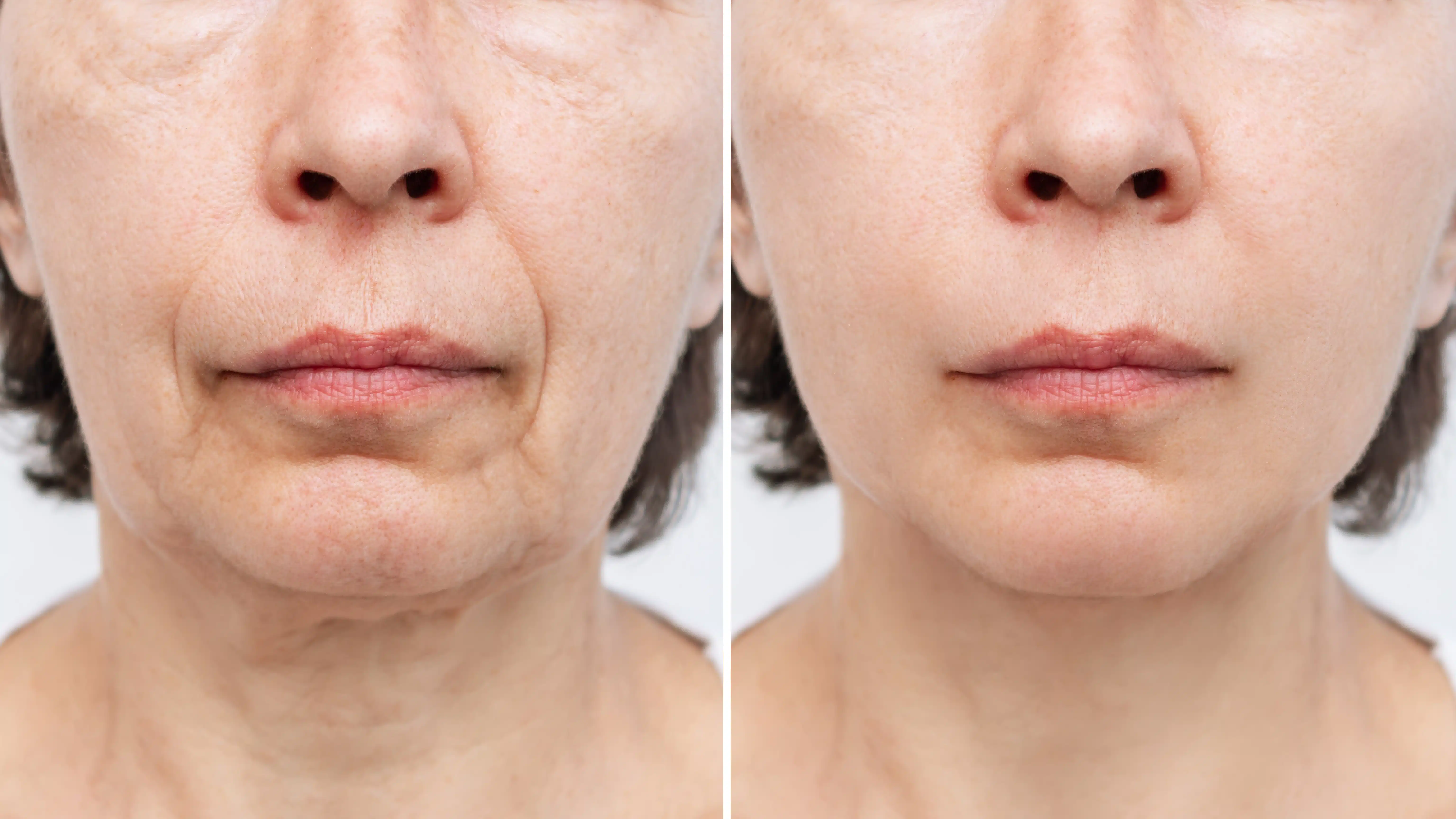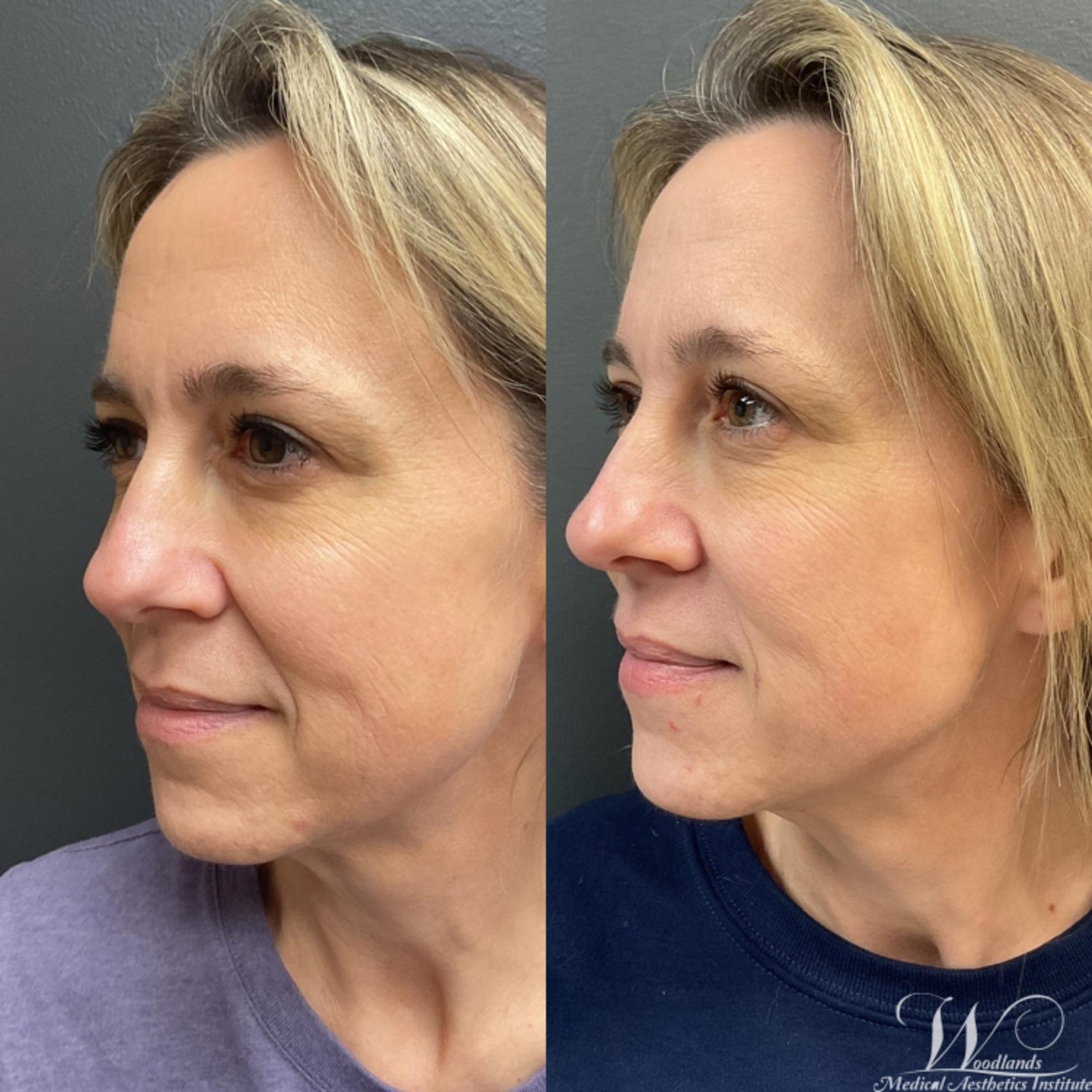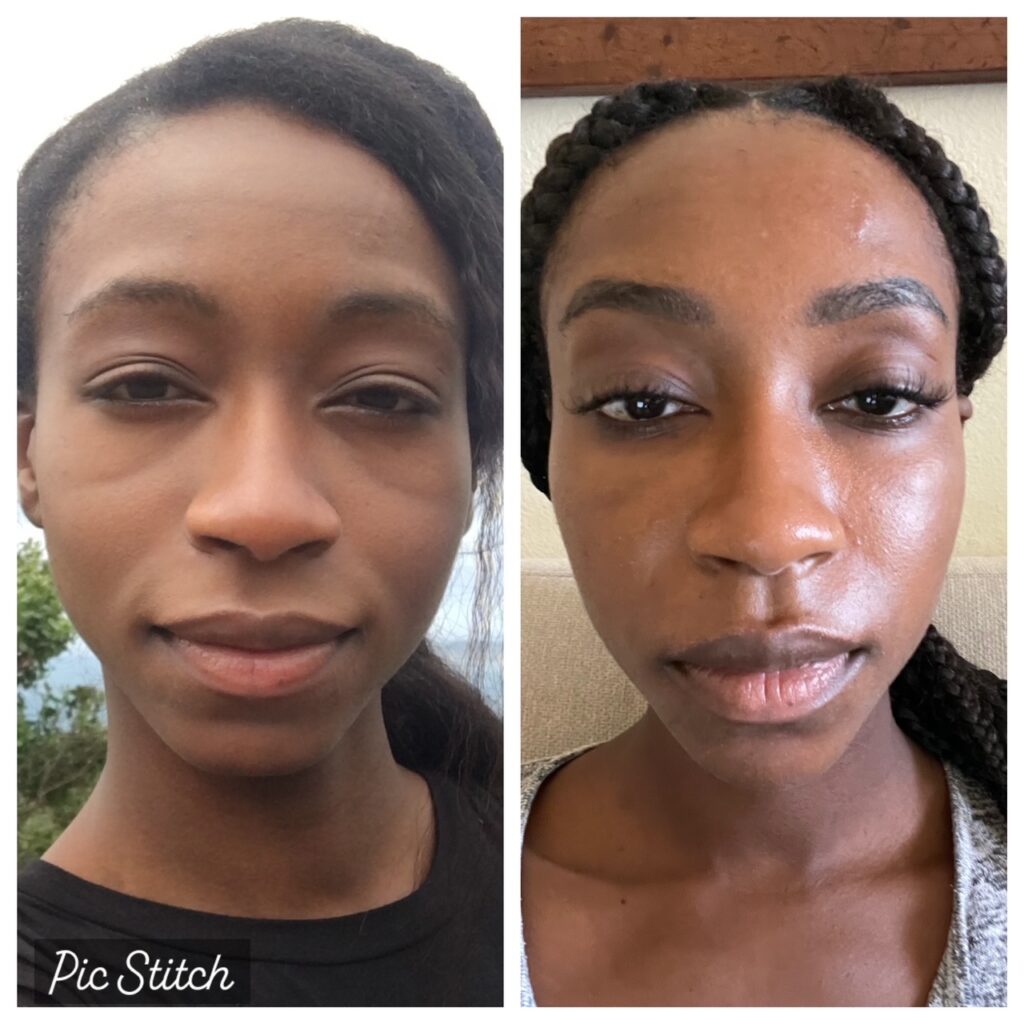Why Ultherapy Could Be Medically Required: Checking Out the Reasons for a Non Surgical Lift
Ultherapy is getting interest as a practical choice for people encountering skin laxity as a result of maturing or certain clinical problems. This non-surgical therapy promotes collagen production, supplying an option that stays clear of the recovery time connected with intrusive treatments. As individuals look for to improve not just their look however likewise their overall skin health and wellness, comprehending the situations that call for Ultherapy's usage becomes essential. What factors add to its medical necessity?
Recognizing Ultherapy: What It Is and Exactly how It Works
Ultherapy, a non-invasive cosmetic treatment, utilizes ultrasound modern technology to boost collagen manufacturing and advertise skin tightening up. By delivering focused ultrasound energy deep into the skin, it targets the foundational layers usually addressed in surgical facelifts. This process urges the body's all-natural healing action, leading to steady training and tightening of the skin over time.

Treatment sessions normally last between 30 to 90 minutes, depending on the size of the location being treated. While outcomes may not be quickly noticeable, perfect results normally appear within 2 to three months as collagen remains to establish. Ultherapy deals a compelling non-surgical option for people looking for skin restoration without the demand for invasive procedures.
The Aging Process: Results on Skin Elasticity and Collagen
Aging inevitably brings modifications that decrease skin elasticity and collagen manufacturing, resulting in visible signs of drooping and wrinkles. As individuals age, the skin's ability to preserve wetness declines, resulting in a drier and less resistant surface area. Collagen, an important protein in charge of skin framework, additionally diminishes, causing the skin to shed its suppleness and youthful look. Factors such as sunlight direct exposure, ecological toxins, and lifestyle selections further accelerate this decline in skin quality.
This loss of flexibility and collagen produces a cascade of modifications, consisting of the development of jowls, deepening nasolabial folds up, and an overall sagging appearance. The skin's support group compromises, making it more prone to the results of gravity. Consequently, numerous people look for interventions like Ultherapy to combat these aging effects, aiming to restore a much more vibrant, taut appearance without the need for intrusive operations.
Medical Conditions That May Advantage From Ultherapy
Ultherapy is significantly identified for its possible advantages in dealing with various clinical conditions. People experiencing skin laxity, those in post-surgical recuperation, and clients with persistent skin conditions might find this non-invasive treatment helpful. By promoting collagen manufacturing, Ultherapy can boost skin firmness and improve overall appearance for these groups.
Skin Laxity Problems
Skin laxity can be a substantial concern for people experiencing various clinical problems that impact the honesty and flexibility of their skin. Conditions such as Ehlers-Danlos syndrome, which interferes with collagen production, can result in early skin aging and sagging. Additionally, individuals with autoimmune disorders may experience skin changes that contribute to laxity. Hormonal variations, specifically during menopause, also contribute in diminishing skin suppleness. Ultherapy, utilizing ultrasound modern technology, targets the deeper layers of skin, boosting collagen manufacturing and tightening up the influenced areas. This non-invasive treatment might supply a practical remedy for those looking for to attend to skin laxity arising from these clinical conditions, enhancing both look and self-esteem without the demand for medical intervention.
Post-Surgical Recovery Help
Post-surgical recuperation can commonly existing obstacles, particularly for people experiencing skin laxity as a result of medical treatments. Ultherapy functions as a potential help in this scenario, using ultrasound technology to boost collagen production and boost skin tightness without invasive treatments. People who have actually undertaken surgical procedures such as renovations, lipo, or various other body contouring procedures may locate that Ultherapy enhances their recuperation by attending to unequal texture and laxity that can occur post-operation. This non-surgical approach can bring about boosted aesthetic end results, possibly reducing the requirement for extra medical treatments. It may help ease discomfort linked with the recovery process, offering clients an extra comprehensive healing experience. Ultherapy can be an important alternative in post-surgical treatment.
Persistent Skin Disease
For individuals dealing with chronic skin disease such as acne marks, rosacea, or laxity as a result of aging, non-invasive therapies might supply this contact form considerable relief and enhancement. Ultherapy has become a promising alternative, making use of ultrasound innovation to promote collagen production deep within the skin. This procedure can improve skin texture and elasticity, resolving problems like unequal skin tone and sagging. Particularly, those with rosacea might experience reduced soreness and inflammation, while individuals with acne scars can profit from improved skin smoothness and general look. Importantly, Ultherapy offers a non-surgical option that minimizes recuperation time and dangers connected with intrusive procedures, making it an appealing choice for people seeking reliable monitoring of persistent skin disease.
Emotional Influence of Drooping Skin and Aesthetic Concerns
The psychological toll of aging usually shows up in the type of sagging skin, which can substantially affect an individual's self-confidence and total emotional well-being. Lots of people associate younger looks with energy and good looks, causing sensations of insufficiency when encountered with visible indications of aging. This perceived decline in appeal can cause social anxiety, withdrawal from social interactions, and an enhanced fixation with one's appearance.
Individuals might really feel forced to seek aesthetic treatments to deal with these worries, as the need to keep a youthful appearance can come to be intertwined with personal identification. The psychological impacts of sagging skin might also cause clinical depression or a lessened top quality of life. Non-surgical options like Ultherapy arise as possible options, aiming not only to renew the skin but likewise to restore confidence and a positive self-image, inevitably attending to the much deeper psychological implications of aging.
Comparing Ultherapy to Standard Surgical Options
When contrasting Ultherapy to traditional surgical choices, significant differences arise in both cost-effectiveness and recovery time. Ultherapy deals a non-invasive approach that frequently leads to reduced expenses and minimal downtime for individuals. On the other hand, medical lifts typically require even more economic investment and a prolonged recuperation duration.
Cost-Effectiveness of Ultherapy

Typical surgical lifts commonly come with significant in advance prices and extended healing times, Ultherapy offers an engaging alternative that can provide comparable outcomes at a portion of the price. The typical expense of a medical facelift have a peek at these guys can range from $7,000 to $15,000, while Ultherapy treatments commonly fall between $2,000 and $4,500, depending upon the location treated and supplier knowledge. Furthermore, the absence of comprehensive pre-operative assessments and post-operative care connected with Ultherapy additionally adds to its cost-effectiveness. This strategy not only minimizes economic pressure yet additionally allows people to purchase various other aspects of their wellness and well-being. This way, Ultherapy becomes a monetarily feasible choice for those looking for face renewal without the burdens of conventional surgery.
Healing Time Contrast
Recovery time is a considerable variable in the decision-making procedure for those taking into consideration cosmetic treatments. Ultherapy attracts attention as a non-surgical alternative that commonly calls for marginal downtime. Many individuals can go back to their day-to-day activities virtually immediately, experiencing just light inflammation or swelling that typically fixes within a few hours. In comparison, traditional surgical choices, such as facelifts, commonly demand a prolonged recovery duration. Individuals may face numerous weeks of swelling, bruising, and limited activity, with some returning to typical routines using up to three months. This plain difference in recuperation time makes Ultherapy an attractive choice for people seeking effective outcomes without the substantial aftercare connected with surgical procedure, permitting a smoother modification back to daily life.
The Long-Term Conveniences of Non-Invasive Treatments for Skin Health And Wellness
As people progressively look for options to operations, the long-lasting benefits of non-invasive therapies for skin health and wellness become more noticeable. Treatments such as Ultherapy, chemical peels, and laser therapy deal considerable advantages without the requirement for extensive healing times related to surgery. RJ Clinic Ultherapy. In time, these non-invasive alternatives can promote collagen production, bring about firmer skin and a much more vibrant appearance
Furthermore, normal non-invasive treatments can enhance skin texture, tone, and flexibility, enhancing total skin health and wellness. Patients usually experience less difficulties and negative effects, making these procedures a lot more enticing.
Moreover, the collective effects of consistent treatments can maintain and lengthen visual improvements, allowing individuals to preserve their preferred appearance with marginal downtime. By prioritizing non-invasive techniques, people can accomplish lasting results while prioritizing their health and wellness and health. Ultimately, the long-term benefits of such approaches emphasize their growing popularity in modern skin care.
Regularly Asked Questions

For how long Does an Ultherapy Session Commonly Take?
An Ultherapy session generally lasts between my link 30 to 90 minutes, relying on the treatment area. Aspects such as the person's particular requirements and the level of the procedure can influence the general period.

Exist Any Type Of Side Effects Related To Ultherapy?
Ultherapy can cause adverse effects such as short-term redness, swelling, or inflammation in the treated area - Density RF Malaysia. While the majority of individuals experience minimal pain, it is important to speak with an expert for customized guidance and potential responses
Just How Soon Can I See Outcomes After Treatment?
Arise from Ultherapy typically begin to show up within a couple of months post-treatment. The full effects might remain to establish over 6 months as collagen production boosts, leading to visible training and tightening of the skin.
Is Ultherapy Suitable for All Skin Kinds?
Ultherapy is typically appropriate for numerous skin kinds, consisting of lighter and darker tones. Individual skin conditions and worries might influence its effectiveness, making assessments with a qualified expert necessary for customized recommendations.
How Typically Should Ultherapy Treatments Be Repeated?
Ultherapy therapies are typically recommended every 6 to year, depending upon private skin disease and wanted outcomes. Normal analyses by a certified professional can aid establish the very best regularity for maintenance and effectiveness.